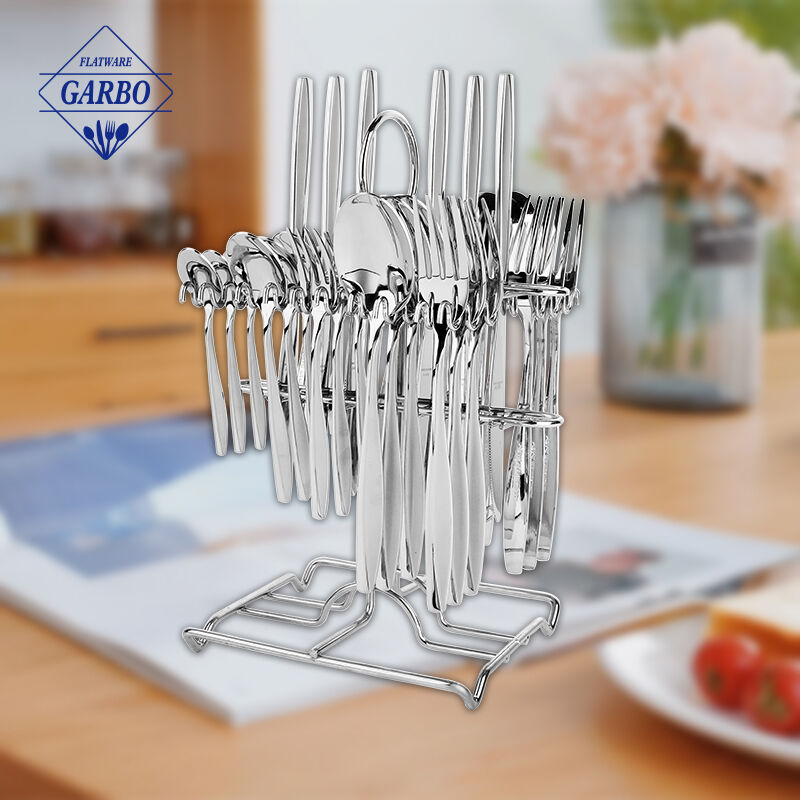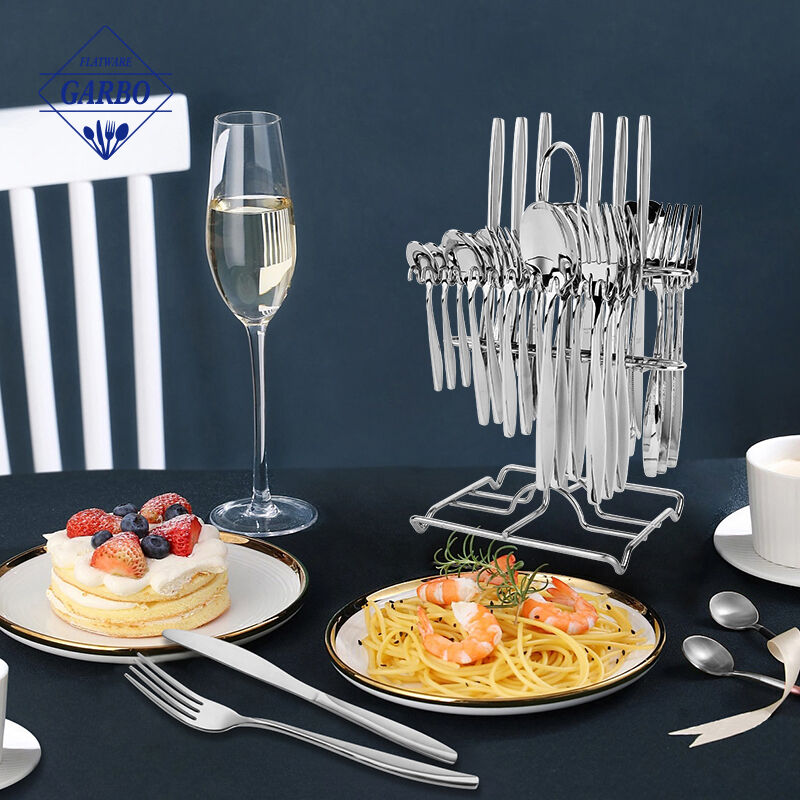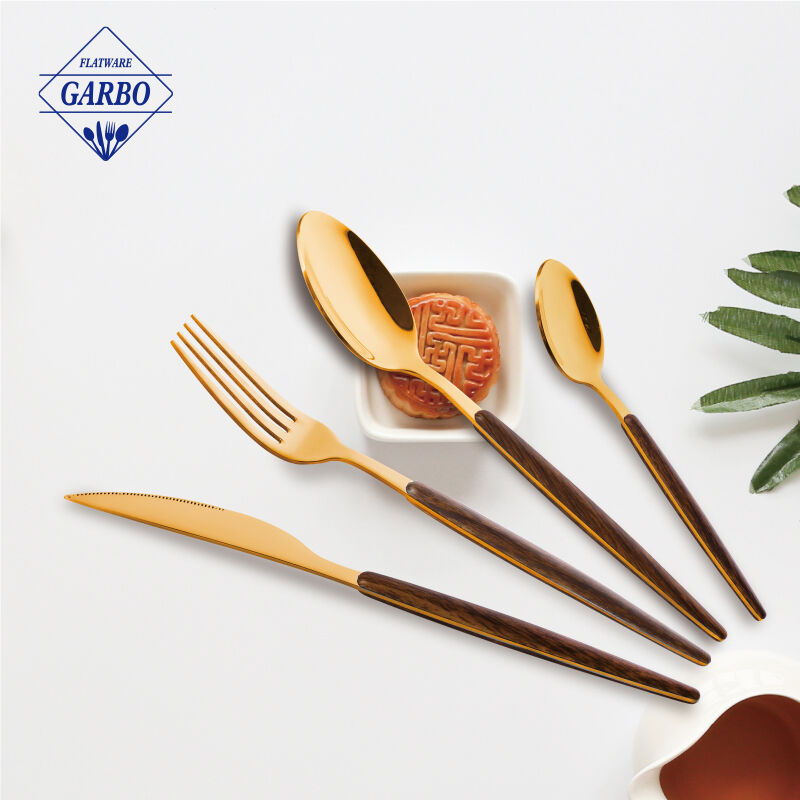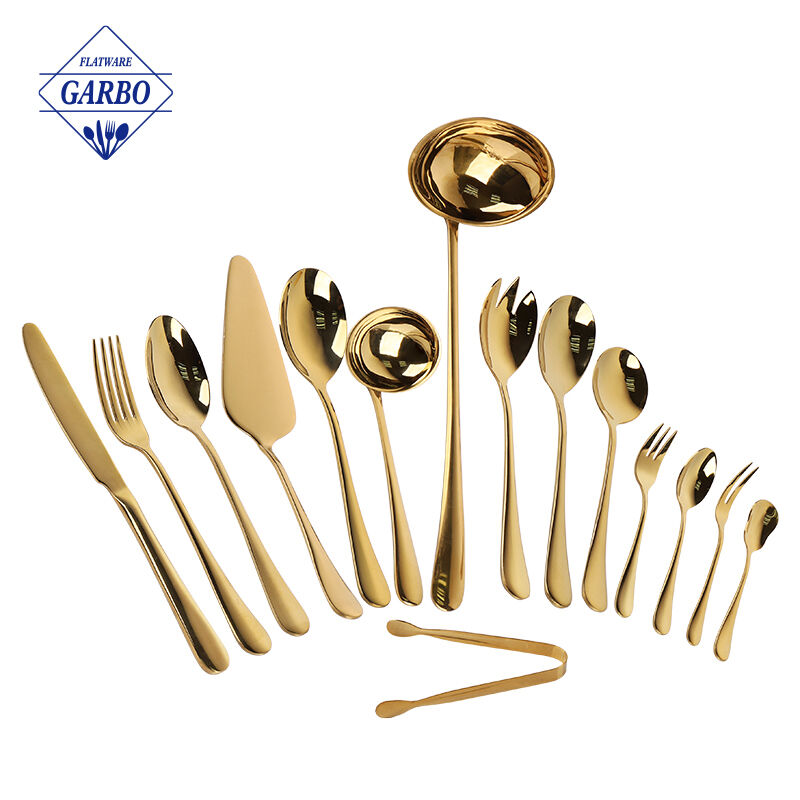Pulished on May. 27, 2023
Flatware sets are an essential part of our daily dining experience, and they come in a variety of finishes to suit different preferences and styles. Two popular options are mirror polish and matte polish. While both finishes serve the purpose of enhancing the aesthetics of flatware, they offer distinct visual and tactile experiences. In this article, we will delve into the differences between mirror polish and matte polish in flatware sets, exploring their characteristics, advantages, and considerations.

Let’s talk about the mirror polish firstly.
Mirror polish, as the name suggests, creates a reflective surface that resembles a mirror. It is achieved through an intensive polishing process that smoothens the flatware's surface to a high degree, resulting in a glossy and lustrous appearance. The mirror-like finish is characterized by its ability to reflect light, providing a vibrant and elegant look to the flatware. This finish is often associated with a classic and formal aesthetic, making it a popular choice for special occasions and formal dining settings.
How about the matte polish?
On the other hand, matte polish offers a subdued and understated appearance. It is created by intentionally dulling the surface of the flatware, resulting in a non-reflective, soft, and textured finish. Matte polish can be achieved through various techniques, such as sandblasting or chemical treatments, which create a fine and uniform grain on the surface of the flatware. This finish is favored for its contemporary and modern appeal, often complementing minimalist and Scandinavian-inspired table settings.
One of the main differences between mirror polish and matte polish lies in their visual impact. Mirror polish creates a sense of opulence and sophistication, exuding a luxurious vibe that elevates the overall dining experience. Its glossy surface reflects the surroundings, creating an illusion of depth and dimension. In contrast, matte polish offers a more relaxed and casual look, perfect for everyday use or when aiming for a contemporary and laid-back ambiance. Its soft and non-reflective appearance adds a touch of warmth and subtlety to the table setting.

Furthermore, the tactile experience provided by mirror polish and matte polish varies significantly. Mirror polish tends to have a smoother texture, as the intensive polishing process eliminates any roughness on the flatware's surface. This smoothness contributes to a comfortable and seamless dining experience, especially when handling delicate foods. On the other hand, matte polish introduces a tactile element to the flatware, with its textured surface offering a unique sensation when held. The grain-like finish adds a sense of grip, making it particularly suitable for those who prefer a sturdy and tactile feel.

How to make a selection between mirror polish and matte polish?
Maintenance and care requirements are also worth considering when choosing between mirror polish and matte polish flatware sets. Mirror polish, while visually striking, tends to be more prone to showing fingerprints, smudges, and scratches. The reflective surface can highlight any imperfections, requiring frequent polishing and cleaning to maintain its pristine appearance. In contrast, matte polish is more forgiving in terms of maintenance. Its textured surface is less susceptible to fingerprints and minor scratches, making it a practical choice for those seeking a low-maintenance option.
What’s the advantage of mirror polish?
Another aspect to bear in mind is the compatibility of these finishes with different tableware styles. Mirror polish is highly versatile and can easily complement various table settings, from traditional and ornate to modern and sleek. Its reflective quality allows it to harmonize with different types of china, glassware, and linens. Matte polish, on the other hand, is often preferred when aiming for a specific aesthetic, such as a minimalist or industrial style. Its muted appearance can create a visually pleasing contrast when paired with bold or colorful tableware.

While mirror polish and matte polish are distinct in their characteristics and visual impact, it is important to note that personal preferences play a significant role in the choice between the two. Some individuals might be drawn to the timeless elegance of mirror polish, appreciating its ability to create a sophisticated dining atmosphere. Others might lean towards the contemporary charm of matte polish, valuing its subtle and tactile qualities. Ultimately, the decision should be based on individual style, the intended use of the flatware, and the desired overall ambiance of the dining experience.
Mirror polish and matte polish offer unique finishes for flatware sets, each with its own set of characteristics, advantages, and considerations. Mirror polish provides a reflective and glossy appearance, exuding luxury and elegance, while matte polish offers a subdued and textured finish, perfect for contemporary and relaxed table settings. The choice between the two depends on personal preferences, the desired aesthetic, and the level of maintenance one is willing to undertake. Regardless of the chosen finish, both options can enhance the dining experience and add a touch of style and sophistication to any table.